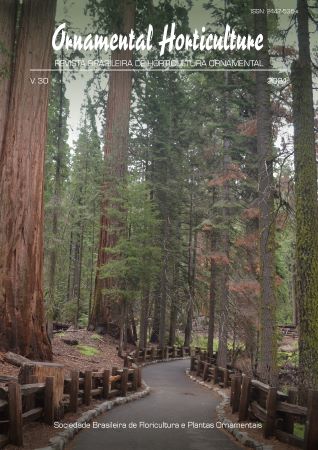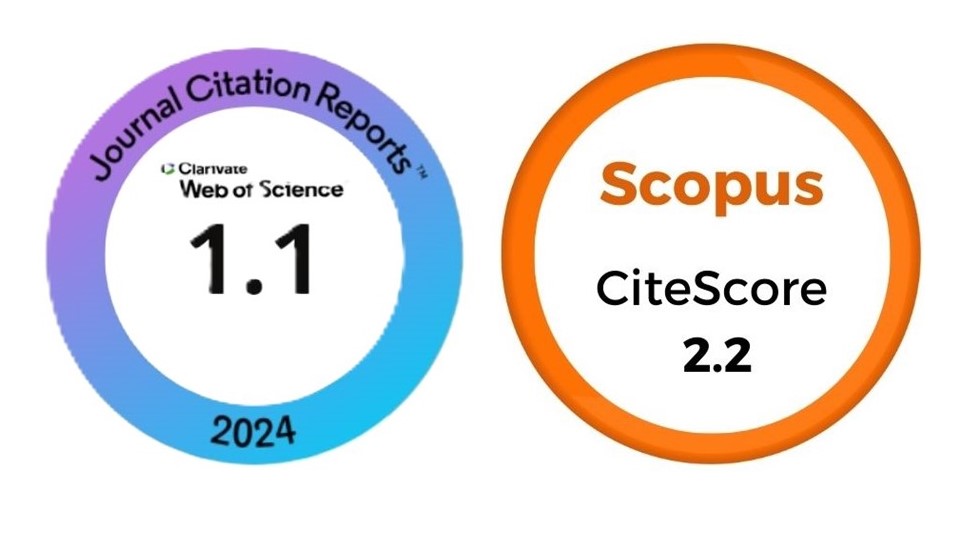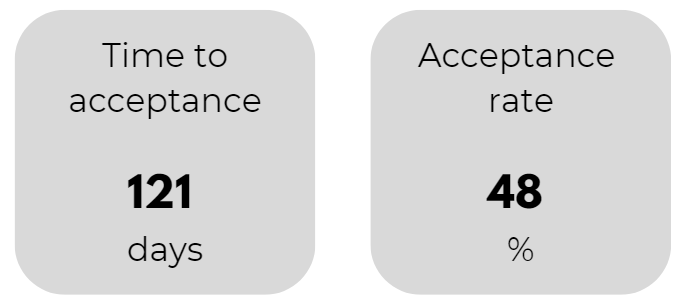Rapid propagation of Homalomena gigantea ornamental plant using rhizome cuttings
DOI:
https://doi.org/10.1590/2447-536X.v30.e242711Keywords:
apical rhizome, distal rhizome, Homalomena gigantea, middle rhizomeAbstract
This study investigates the critical factors influencing shoot and root regeneration from Homalomena gigantea rhizome cuttings, providing valuable insights for rhizome cutting practices for this plant species. Three key experiments were conducted to assess the impact of plant growth regula- tor (PGR) concentrations, cutting length, and cutting section on regeneration. In the first experiment, different concentrations of α-NAA and BAP were examined, revealing that PGR selection and concentration play a pivotal role in shoot and root induction and plantlet development. The highest success rates were observed at 150 ppm α-NAA and 100 ppm BAP, although there was a trade-off between the quantity and quality of plantlets, emphasizing the need for a balanced plant regulator selection. The second experiment investigated the influence of rhizome cutting length. Longer cuttings, particularly at 5 and 7 cm, consistently led to better shoot and root development, highlighting the importance of selecting appropriate cutting lengths. In the third experiment, cutting sections (apical, middle, and distal) without PGR concentrations were assessed, with all sections showing high regeneration rates. However, the apical section produced the highest-quality plantlets with superior growth parameters, followed by the middle section, while the distal section exhibited lower effectiveness. In summary, these findings underscore the significance of PGR choice and concentration, cutting length, and cut- ting section for successful regeneration of H. gigantea from rhizome cuttings. These insights provide valuable guidance for enhancing rhizome cuttings methods for this plant species and promoting efficient propagation.
Downloads
References
ASHOK A.D.; RAVIVARMAN J. Influence of NAA on root promotion in vegetative propagation of Duranta erecta L. International Journal of Chemical Studies, v.8, n.5, p.1357-1359, 2020. https://doi.org/10.22271/chemi.2020.v8.i5s.10490
BOYCE P.C.; YENG W.S. Studies on Homalomeneae (Araceae) of Borneo I. Four new species and preliminary thoughts on informal species groups in Sarawak. Gardens’ Bulletin Singapoor, v.60, n.1, p.129, 2008.
CARVALHO J.; WELLINGTON G.O.; MELO M.T.P.; MARTINS, E.R. Comprimento da estaca no desenvolvimento de mudas de alecrim-pimenta. Ciência Rural, v.39, n.7, p.2199-2202, 2009. https://doi.org/10.1590/S0103-84782009005000152
CHADHA A.; FLORENTINE S.K.; DHILEEPAN K.; TURVILLE C. Effect of rhizome fragment length and burial depth on the emergence of a tropical invasive weed Cyperus aromaticus (Navua Sedge). Plants, v.11, n.23, p.3331, 2022. https://doi.org/10.3390/plants11233331
CHAUHAN A.K.; HARSH K.; BISHT I.D.; BHATT A.B. Protocol for vegetative propagation of Trillium govanianum Wall ex D. Don. Journal of Applied Research on Medicinal and Aromatic Plants, v.16, p.100233, 2020. https://doi.org/10.1016/j.jarmap.2019.100233
CHEN, J.; WEI, X. Thidiazuron in micropropagation of aroid plants. In: Thidiazuron: From Urea Derivative to Plant Growth Regulator. FAISAL, M.; AHMAD, N. (Eds.). Berlin/Heidelberg: Springer, 2018. pp.95-113.
DAHNIAR N.; ELVAVINA P. Kombinasi BAP dan NAA untuk media Perbanyakan Nanas varietas Smooth Cayenne, Toboali in vitro. Agrotechnology Research Journal, v.6, n.1, p.21-26, 2022. https://doi.org/10.20961/agrotechresj.v6i1.55629
GHOOCHANI KHORASANI, A.; ROOHOLLAHI, I.; GOLKAR, P. Effect of different concentrations of nitrogen and 2,4-D on callus and plantlet production of Zamioculcas zamiifolia Engl under in vitro condition. Journal of Horticultural Science, v.35, n.1, p.55-62, 2021. https://doi.org/10.22067/JHORTS4.V35I1.86111
HARTMANN H.T.; KESTER D.E.; DAVIES JR.F.T.; GENEVE R.L. Plant propagation: principles and practices. Upper Saddle River: Prentice Hall, Inc., 2002. 880pp.
KAVIANI, B.; SEDAGHATHOOR, S.; MOTLAGH, M.R.S.; ROUHI, S. Influence of plant growth regulators (BA, TDZ, 2-iP and NAA) on micropropagation of Aglaonema widuri. Iranian Journal Plant Physiology, v.9, p.2703-2718, 2019. https://doi.org/10.30495/IJPP.2019.668856
KENTELKY E.; JUCAN D.; SZEKELY-VARGA Z. Efficacy of different concentrations of NAA on selected ornamental woody shrubs cuttings. Horticulturae, v.7, p.464, 2021. https://doi.org/10.3390/horticulturae7110464
KHARRAZI, M.; MORADIAN, M.; MOGHADDAM, Z.S.; KHADEM, A.; SHARIFI, A. Micropropagation and ex vitro rooting of three ZZ plant (Zamioculcas zamiifolia Engl.) cultivars. In Vitro Cellular & Developmental Biology-Plant, v.59, n.1, p.129-139, 2023. https://doi.org/10.1007/s11627-022-10323-3
LEE G.M.; KIM J.G. Effects of rhizome length and node numbers on the proliferation of Menyanthes trifoliata cuttings. Journal of Wetlands Research, v.14, n.2, p.193-198, 2012. https://doi.org/10.17663/JWR.2012.14.2.193
NGUYEN, D.H.; TRAN, M.H.; NGUYEN, T.H.T.; DO, N.D. The diversity of Monocotyledone plants in Pu Hoat Nature Reserve, Nghe An Province. VNU Journal of Science: Natural Sciences and Technology, v.35, n.1, p.1-7, 2019. https://doi.org/10.25073/2588-1140/vnunst.4843
NGUYEN, L.T.K.; HOANG, H.N.T.; DO, T.T., TRAN, T.V.A.; NGUYEN, H.T.; HO, D.V. Sesquiterpenoids from the rhizomes of Homalomena pendula and their anti-inflammatory activities. Natural Product Research, v.37, n.15, p.2559-2567, 2023. https://doi.org/10.1080/14786419.2022.2056182
NGUYEN, L.T.K.; HOANG, H.N.T.; TRAN, T.V.A.; NGUYEN, H.T.; HO, D.V. Homalolides CD, two new sesquiterpenoids from the rhizomes of Homalomena pendula. Natural Product Research, v.38, n.1, ´p.60-67, 2022. https://doi.org/10.1080/14786419.2022.2103557
NGUYEN, L.T.K.; VO, H.Q.; HOANG, H.N.T.; TRAN, T.V.A.; MINH NGUYEN, H.; PHAM, T.V.; NGO, H.P.T.; PHAM, T.; HO, D.V. Structure revision and absolute configuration of 5, 7-diepi-2α-hydroxyoplopanone and anti-osteoporotic activities of sesquiterpenoids from the rhizomes of Homalomena pendula. Natural Product Research, p.1-10, 2023. https://doi.org/10.1080/14786419.2023.2180505
NIVOT N.; OLIVIER A.; LAPOINTE L. Vegetative propagation of five northern forest understory plant species from either rhizome or stem sections. HortScience horts, v.43, n.5, p.1531-1537, 2008. https://doi.org/10.21273/HORTSCI.43.5.1531
PHAM T.V.; NGO H.P.T.; THI T.D.N.; KHOA N.H.; THI N.H.H.; PHAM T. Volatile constituents and anti-osteoporotic activity of the n-hexane extract from Homalomena gigantea rhizome. Natural Product Communications, v.17, n.9, 1934578X221125433, 2022. https://doi.org/10.1177/1934578X221125433
POURHASSAN, A.; KAVIANI, B.; KULUS, D.; MILER, N.; NEGAHDAR, N. A complete micropropagation protocol for black-leaved Zamioculcas zamiifolia (Lodd.) Engl. ‘Dowon’. Horticulturae, v.9, n.4, p.422, 2023. https://doi.org/10.3390/horticulturae9040422
RAMBEY R.; PURBA E.R.; HARTANTO A.; PRAKOSO B.P.; PENIWIDIYANTI P.; IRMAYANTI L.; PURBA M.P. Diversity and ethnobotany of Araceae in Namo Suro Baru Village, North Sumatra, Indonesia. Biodiversitas Journal of Biological Diversity, v.23, n.11, p.6006-6012, 2022. https://doi.org/10.13057/biodiv/d231155
RAOMAI S.; KUMARIA S.; TANDON P. In vitro propagation of Homalomena aromatica Schott., an endangered aromatic medicinal herb of Northeast India. Physiology and Molecular Biology of Plants, v.19, p.297-300, 2013.
NGUYEN, L.T.K.; HOANG, H.N.T.; TRAN, T.V.A.; NGUYEN, H.T.; HO, D.V. Homalolides CD, two new sesquiterpenoids from the rhizomes of Homalomena pendula. Natural Product Research, v.38, n.1, ´p.60-67, 2022. https://doi.org/10.1080/14786419.2022.2103557
NGUYEN, L.T.K.; VO, H.Q.; HOANG, H.N.T.; TRAN, T.V.A.; MINH NGUYEN, H.; PHAM, T.V.; NGO, H.P.T.; PHAM, T.; HO, D.V. Structure revision and absolute configuration of 5, 7-diepi-2α-hydroxyoplopanone and anti-osteoporotic activities of sesquiterpenoids from the rhizomes of Homalomena pendula. Natural Product Research, p.1-10, 2023. https://doi.org/10.1080/14786419.2023.2180505
NIVOT N.; OLIVIER A.; LAPOINTE L. Vegetative propagation of five northern forest understory plant species from either rhizome or stem sections. HortScience horts, v.43, n.5, p.1531-1537, 2008. https://doi.org/10.21273/HORTSCI.43.5.1531
PHAM T.V.; NGO H.P.T.; THI T.D.N.; KHOA N.H.; THI N.H.H.; PHAM T. Volatile constituents and anti-osteoporotic activity of the n-hexane extract from Homalomena gigantea rhizome. Natural Product Communications, v.17, n.9, 1934578X221125433, 2022. https://doi.org/10.1177/1934578X221125433
POURHASSAN, A.; KAVIANI, B.; KULUS, D.; MILER, N.; NEGAHDAR, N. A complete micropropagation protocol for black-leaved Zamioculcas zamiifolia (Lodd.) Engl. ‘Dowon’. Horticulturae, v.9, n.4, p.422, 2023. https://doi.org/10.3390/horticulturae9040422
RAMBEY R.; PURBA E.R.; HARTANTO A.; PRAKOSO B.P.; PENIWIDIYANTI P.; IRMAYANTI L.; PURBA M.P. Diversity and ethnobotany of Araceae in Namo Suro Baru Village, North Sumatra, Indonesia. Biodiversitas Journal of Biological Diversity, v.23, n.11, p.6006-6012, 2022. https://doi.org/10.13057/biodiv/d231155
RAOMAI S.; KUMARIA S.; TANDON P. In vitro propagation of Homalomena aromatica Schott., an endangered aromatic medicinal herb of Northeast India. Physiology and Molecular Biology of Plants, v.19, p.297-300, 2013.
REHMAN M.; CHAUDHARY M.; KUMAR S. Effect of BAP (6-Benzylaminopurine) and NAA (α-Napthalene Acetic Acid) treatment on micropropagation of Adansonia digitata L. Plant Cell Biotechnology and Molecular Biology, v.24, n.3-4, p.42-51, 2023.
SAYADI NEJAD, M.; SADEGHI, S. M. Optimization of callus production and regeneration of Zamiifolia (Zamioculcas zamiifolia). Journal of Horticultural Science, v.33, n.3, p.405-415, 2019. https://doi.org/10.22067/JHORTS4.V35I1.86111
SINGH M.K.; RAM R.; KUMAR, S. Impact of length of rhizome and number of feeder roots for successful survival in three Alstroemeria (Alstroemeria hybrids) cultivars plants. Journal of Ornamental Horticulture, v.10, n.1, p.46-48, 2007
SRIVASTAVA, L.M. Plant growth and development: plant regulators and environment. Annals of Botany, v.92, n.6, 2002.
STANLY C.; BHATT A.; SULAIMAN B.; KENG, C.L. Micropropagation of Homalomena pineodora Sulaiman & Boyce (Araceae): a new species from Malaysia. Horticultura Brasileira, v.30, p.39-43, 2012. https://doi.org/10.1590/S0102-05362012000100007
VAN, H.T. Potential uses of some Araceae species in Vietnam. Israel Journal of Plant Sciences, v.70, n.1-2, p.30-46, 2022. https://doi.org/10.1163/22238980-bja10065
WOOLLEY D.J.; WAREING P.F. The interaction between growth promoters in apical dominance. New phytologist, v.71, n.5, p.781-793, 1972. https://doi.org/10.1111/j.1469-8137.1972.tb01957.x
XIE Y.; CHEN T.; REN H.. Rhizome weight and number of sectioning per rhizome determine plantlet growth and propagation rate of Hemerocallis citrina Baroni in cutting propagation. Agronomy, v.12, n.11, p.2777, 2022. https://doi.org/10.3390/agronomy12112777
YUZAMMI, Y. The diversity of aroids (Araceae) in Bogor Botanic Gardens, Indonesia: Collection, conservation and utilization. Biodiversitas Journal of Biological Diversity, v.19, n.1, p.140-152, 2018. https://doi.org/10.13057/biodiv/d190121.
Downloads
Published
Issue
Section
License
Copyright (c) 2024 Ornamental Horticulture

This work is licensed under a Creative Commons Attribution 4.0 International License.








